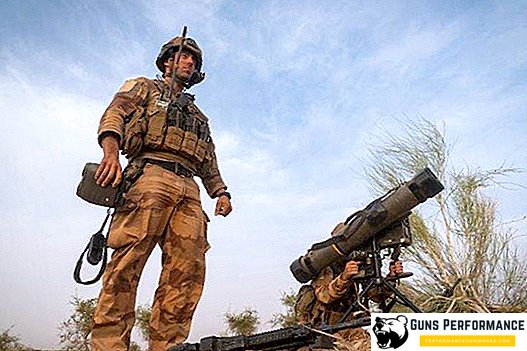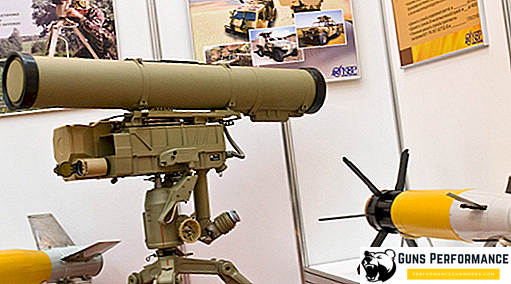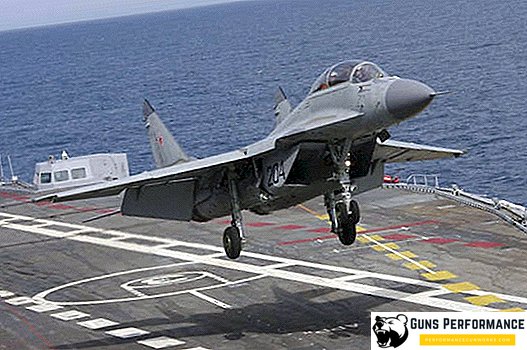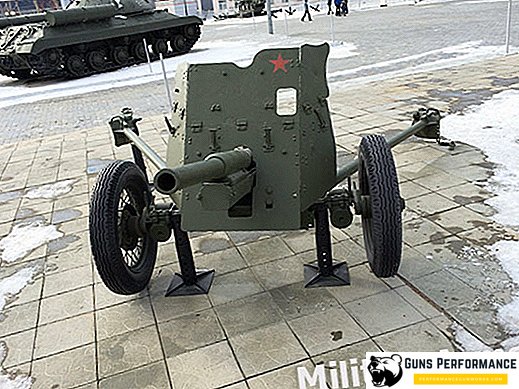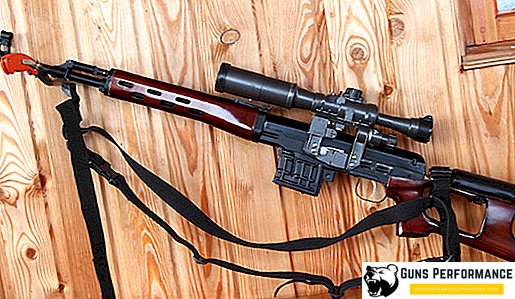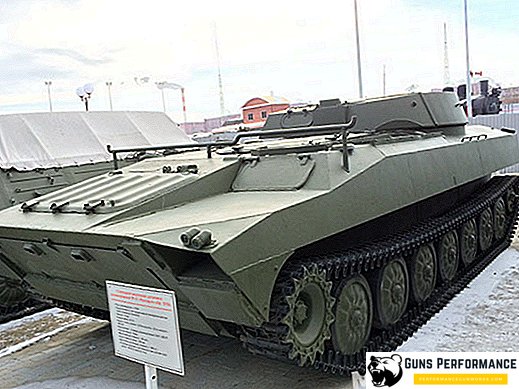
The Mi-2 is a Soviet multi-purpose helicopter created at the Mil Design Bureau in the first half of the 60s. This car was the first Soviet serial helicopter with a gas turbine engine. Production of the Mi-2 was established in 1965 in Poland, it was produced until 1992. During this period, more than 5,400 units of this machine were manufactured.
The Mi-2 helicopter is operated today, it is used to solve a large number of both military and civilian tasks.
Mi-2 has been repeatedly upgraded, created a large number of modifications of this machine. This helicopter was actively exported: its main buyer was the USSR and other Warsaw Pact countries. However, besides this, the Mi-2 was bought by Egypt, Syria, Cuba, Lesotho, Burma, the DPRK and other states. Today, the Mi-2 is used in more than twenty countries around the world.
Mi-2 and managed to make war. It was used by Soviet troops in Afghanistan (although very limited), was a member of the 1973 Arab-Israeli war. The helicopter was used in several local conflicts and wars.
The Mi-2 helicopter was set several world records.

History of creation
By the end of the 50s, it became clear that the first domestic production Mi-1 helicopter did not meet the requirements of the time. They tried to modernize it several times, there were projects for installing a gas turbine engine (GTE) on it, but they remained on paper. Needed a new car with more advanced flight performance.
Miles proposed to create a helicopter with two gas turbine engines at once. This design of the power plant significantly increased the reliability of the machine and flight safety, because if one of the engines failed, the helicopter could fly using the second one. Great interest in the development of the new machine was shown by the leadership of civil aviation, and later the military also paid attention to the helicopter.
The design of a new car in Mil Design Bureau started in early 1960. Designers were given the task of developing such a helicopter that could be used to transport goods and passengers, for military purposes, as well as for the needs of air ambulance and agricultural land processing.
While working on the Mi-2, the designers tried to make the most of the units and components of the Mi-1 helicopter to reduce the cost of the new car.
The power plant for the Mi-2 was developed in the Leningrad OKB-117, the result of its work was the GTD-350 engine (400 hp). Its characteristics made it possible in the shortest possible time to create a new helicopter, which in its dimensions was almost equal to the Mi-1, but at the same time it had a greater payload and passenger capacity, and also significantly exceeded it in basic flight parameters.

At the beginning of 1961, the layout of the future helicopter was approved, and in the autumn of the same year, the first prototype took off. Already at the state testing stage, the Mi-2 set a speed record for helicopters of this class. In the autumn of 1962, the Mi-2 helicopter was presented to the Soviet government and the leadership of the Polish People's Republic.
Tests have shown that the helicopter engine needs to be improved. The design of the power plant as a whole was also changed, which increased its serviceability. This has changed the shape of the cabin. The designers had to completely remake the main rotor and create a new steering screw with a greater burden.
Negotiations on the mass production of a new helicopter between the Soviet and Polish government began in 1963. The following year, a licensing agreement was concluded, according to which the mass production of helicopters and engines for them was to begin at the aircraft factory in Svidnik, where another Mil OKB-Mi-1 machine was manufactured.
For its part, the Soviet Union guaranteed the regular purchase of a large number of helicopters, as well as spare parts for them.
On August 26, 1965, the first Mi-2 helicopter, made by Poles from Soviet components, took to the air in Poland. In November of the same year, its first flight was made by the Mi-2, completely manufactured in Poland.
Mass production of the machine was established in 1966, serial machines were somewhat different from the prototypes made in the USSR. They did not have a keel surface under the tail boom, the shape of the upper part of the fuselage was somewhat different, the location of antennas and flashing lights was changed.
The public Mi-2 helicopter was shown during the Le Bourget exhibition in 1967. In the West, this car received the designation Hoplite ("Hoplit"). For their help in setting up mass production, many employees of the Mil Design Bureau were awarded Polish government awards. Among them was the General Designer Mil, he received the Commander's Cross of the Order of the Renaissance of Poland.
Exploitation
The Mi-2 helicopter is still in service today, this machine is actively used in several dozen countries. For many decades, the Mi-2 was successfully used in the USSR, both in civil and military aviation. Moreover, it was these machines that formed the basis of the Soviet light rotor wing aircraft.
In the USSR, the Mi-2 helicopter was actively used for processing agricultural land, as well as for the transport of passengers and cargo. To work in the Far North was created polar modification of this machine. Used Mi-2 and for search and rescue operations. For border guards was created modification, equipped with a loudspeaker.
The most widespread was the cargo-passenger modification of the helicopter, and the agricultural version of the Mi-2 was very widespread.

Used Mi-2 and as a combat helicopter. Aircraft guns, machine guns, unguided and guided missile weapons were installed on the helicopter.
Mi-2 was used during the liquidation of the Chernobyl accident.
Currently, more than 120 Mi-2 helicopters are being operated in Russia. After the collapse of the USSR, many of these machines fell into private hands, and perform a variety of functions. About three hundred more cars are operated in the former Soviet republics.
Description
The Mi-2 helicopter is made using a single-rotor scheme with one rotor and a tail rotor at the end of the tail boom. The all-metal fuselage is a semi-monocoque type, it can be divided into three parts: the front with the cockpit, the central one (it contains the passenger compartment) and the tail section - it includes a tail boom with a steering screw with stabilizer.
The power plant of the Mi-2 is located in a large superstructure above the fuselage of the machine (in the so-called "boar"). It consists of two GTD-350 engines, a main three-stage reducer and a fan that cools the radiators and the reducer.
The composition of the fuel system Mi-2 includes one tank with a capacity of 600 liters, which is located under the floor of the passenger cabin. On the sides of the fuselage, you can hang two more tanks, each of which holds 238 liters of fuel.
The Mi-2 helicopter is equipped with a three-bladed main rotor and a two-bladed tail rotor. The main rotor is controlled by hydraulic boosters, but in emergency situations manual control is also possible.
Single crew cabin, in the training modification in the cabin there are two seats - for the cadet and instructor.

The helicopter flight control equipment includes a gyrocompass, radio compass, radio altimeter and radio stations. In the military version of the Mi-2 was also installed radar.
Helicopter chassis tricycle.
Depending on its modification and the tasks performed, various additional equipment can be installed on the helicopter: fuel tanks, a winch, a system for spraying chemicals.
Modifications

The Mi-2 helicopter was repeatedly upgraded, there are many of its modifications. Below are some of them:
- Mi-2. The basic model of the helicopter, designed to carry eight passengers.
- Mi-2T. The transport version of the machine, capable of carrying 700 kg of cargo in the cabin or 800 kg - on the external sling.
- Mi-2R. Search and rescue modification of the helicopter, it was equipped with an electric winch capable of lifting 120 kg.
- Mi-2MSB. Modification of the helicopter, created by the Ukrainian company "Motor-Sich" in 2011. The helicopter is equipped with AI-450M engines and a more advanced control system.
- Mi-2RHR. A modification intended for conducting chemical and radiological survey areas. The helicopter was installed special equipment for air sampling.
- Mi-2UPN. Intelligent shock modification of the helicopter. His armament consisted of two blocks with unguided rockets.
- Mi-2URP. Combat modification of the helicopter, designed to destroy enemy tanks and other armored vehicles. The armament of the helicopter consisted of four ATGM "Baby".
- Mi-2US. The modification intended for fire support of land forces. The helicopter mounted 23-mm cannon or 7.62-mm machine guns.
- Mi-2KM. Deck modification of the machine.
- Mi-2M. This car is a deep modernization of the basic version of the Mi-2. The helicopter was equipped with two GTD-350P engines; it made its first flight on July 1, 1974.
- PZL-Swidnik "Kania". Another version of the modernization of the basic version of the Mi-2. This helicopter received improved fuselage lines, a larger cockpit, two Allison 250-C20B GTEs, and more advanced flight and navigation equipment. The first flight of this modification took place on June 3, 1979. The car was certified in Poland and the USA, seven serial helicopters were built.
Specifications
Below are the characteristics of the Mi-2:
- main rotor diameter - 4.5 m;
- diameter of tail rotor - 2.7 m;
- fuselage length - 11.4 m;
- fuselage width - 3.25 m;
- normal take-off weight - 3500 kg;
- Max. take-off weight - 3550 kg;
- engine - 2 × GTD-350;
- power - 2 × 400 l. with.;
- crew - 1 person;
- number of passengers - 10 people;
- Max. speed - 210 km / h;
- range - 580 km;
- ceiling - 4000 m.


